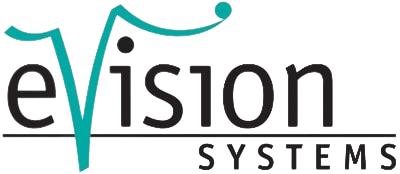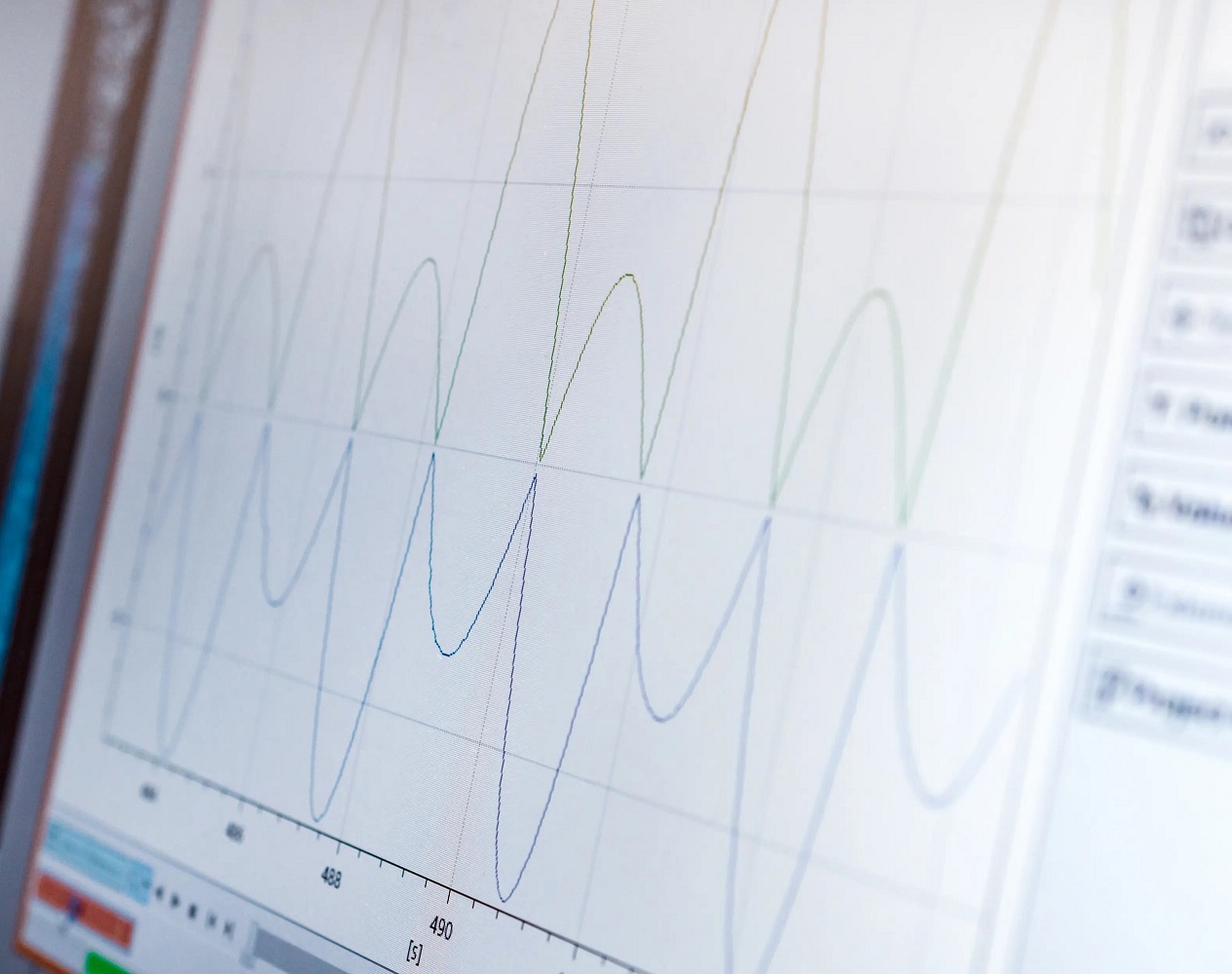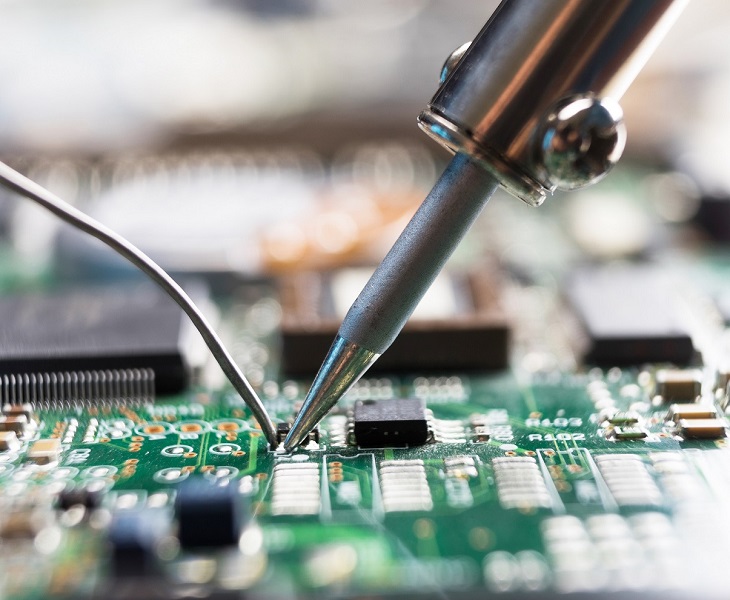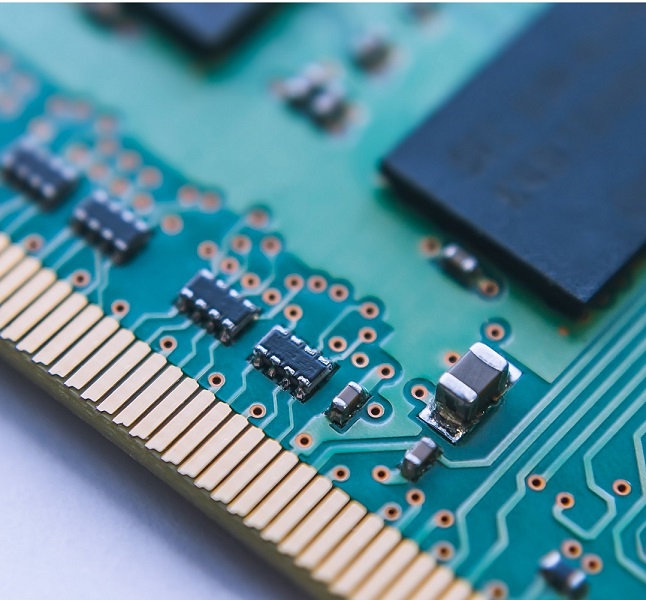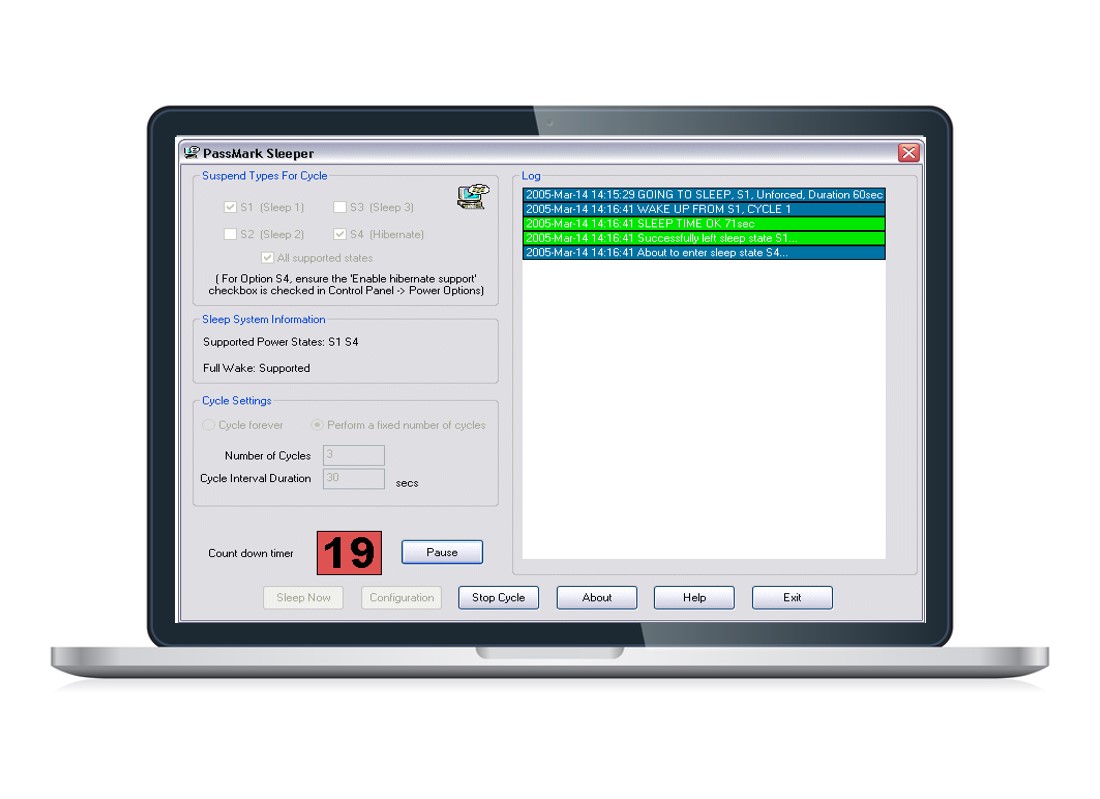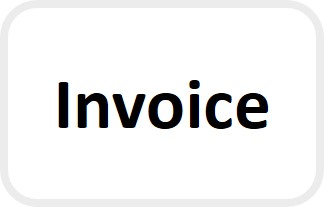Description
Sleeper is a small utility developed by PassMark Software to test the ability of PC systems to enter and recover from sleep and hibernation modes.
Notes
- Versions: V2.3 (Build 1012)
- Last publication date: December 9, 2016
- Free for personal use. Corporate License is $27.00 per license.
Features
Rebooter allows you to:
- Put a PC into any sleep mode (S1, S2, S3) supported by the system
- Put your PC to sleep (S4)
- Wake up the computer after a certain time.
- Put a PC to sleep or hibernate from the command line
- Force the PC to the requested sleep
- Cycle through all sleep states or only all states supported by the system
- Start Sleeper from BurnInTest scripts to test hibernation between test runs.
- View the supported sleep states
Background information on hibernation, standby and hibernation
Power management is a key feature of most new computers. With the proliferation of laptops and wireless computers, it is especially important to have accurate and reliable control over the power states of your system. Most modern computer systems support at least the following basic power states.
The system is fully powered on. Some devices can automatically save electricity when their consumption falls below a certain threshold.
The system appears to be shut down. Power consumption is reduced to one of three power saving levels (see below). The lower the level, the more energy is saved, but the longer it takes for the system to wake up. Mouse movements or keystrokes usually wake up the system.
The system appears to be off. The power consumption is very low. During a hibernation, the operating system context is stored on disk and no longer exists in RAM. Waking up usually results in a hardware boot, but not a software boot.
No power consumption. A full reboot is required to start the system.
ACPI (Advanced Configuration and Power Interface) is an industry standard that defines a power management and configuration mechanism for hardware and operating systems. ACPI defines six discrete energy states. Lower states consume more power but have lower wake-up latency.
S0 - Working
S1 - Asleep
S2 - Asleep
S3 - Snooze
S4 - Sleep
S5 - Off
Sleeper allows the user to put the system in sleep state S1, S2, S3 or S4. To turn off or restart the computer, use the Rebooter application, also available from PassMark. Note that not all computer systems support all power states. It is not uncommon for only S1 and S4 or S1, S3 and S4 to be supported. Attempting to put a system in an unsupported state will result in the next lower supported state being selected.
